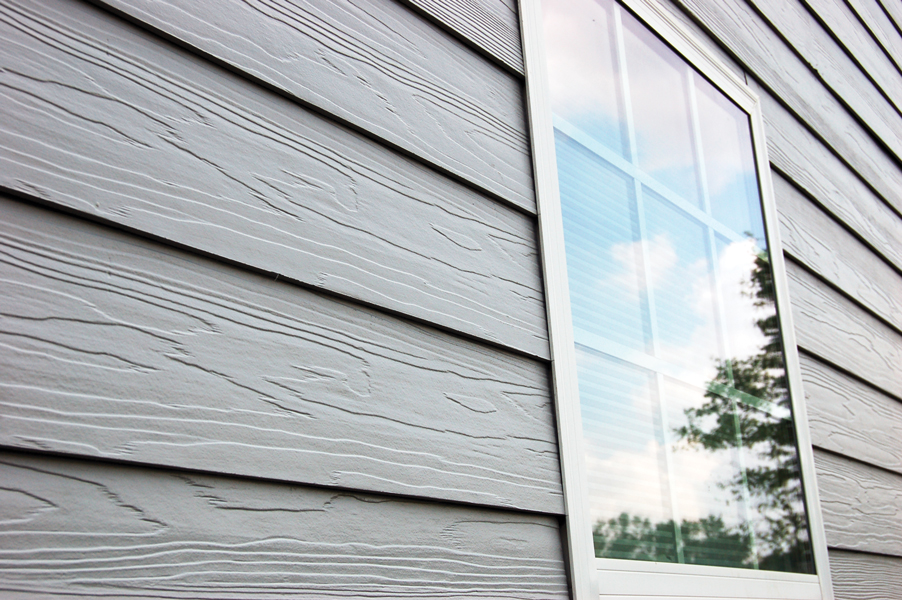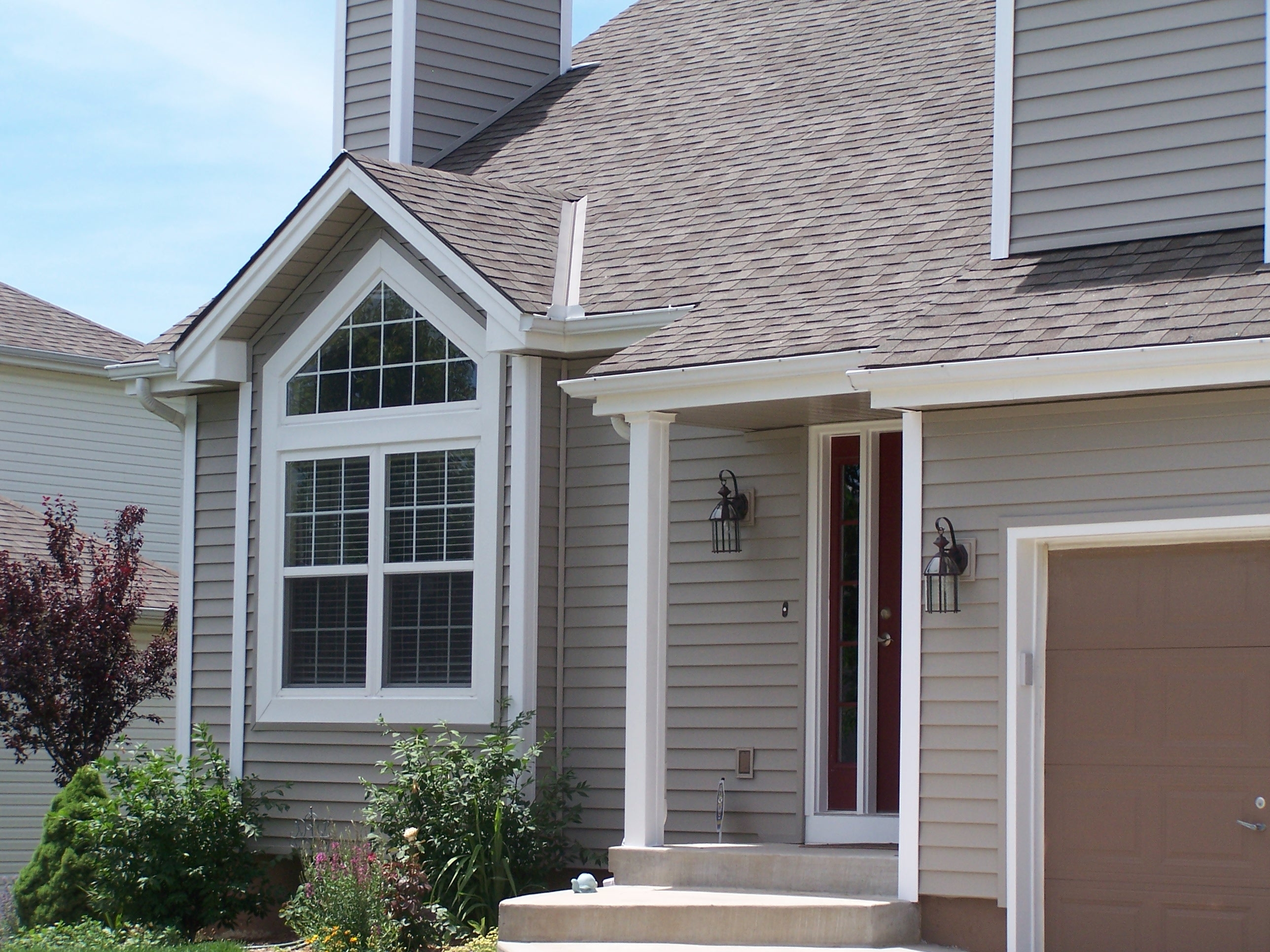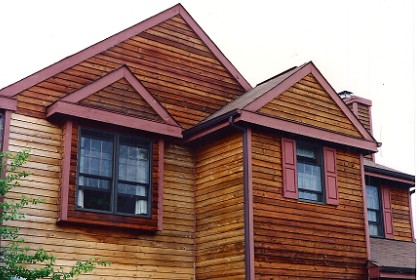Siding Series 3: Fiber Cement, Vinyl, and Wood
Siding comes in many forms. While we would like to share an overview of the many types of siding on the market, we will only go into detail on a few of the options because only a few options meet our strict criteria as being Water Resistant, Energy Efficient, Aesthetically Pleasing, Versatile, and Durable.
 Fiber Cement Siding
Fiber Cement Siding
The wood look is achievable with fiber cement (a material made of cement, cellulose fiber, and fly ash or sand), and it’s available in a variety of colors. This material is installed on top of studs or exterior wall sheathing against a moisture barrier. This type of siding has the added bonus of being nonflammable, termite-resistant, and water-resistant, which means it’s much more durable than wood. Fiber cement is guaranteed to perform for up to 50 years.
Fiber cement is middle of the road in terms of cost. It tends to be more pricey than vinyl, but still much less than wood.
Van Martin installs exceptional fiber cement manufactured by James Hardie. Give us a call to learn more.
 Vinyl Siding
Vinyl Siding
From the time it was introduced around 1960, vinyl has risen to the top as the number one selling siding here in America. Homeowners and builders alike are attracted to its versatility, low cost, and low required maintenance. Homeowners can choose from more than three-hundred color options and profiles, including panels that span horizontally or vertically, singles, fish scales, shakes, beaded, and lap designs. The sole time commitment you’ll have if the siding is installed correctly is giving it the occasional wash. Any siding manufacturer worth its salt will offer lifelong, transferable warranties.
Vinyl is typically the least expensive of your siding options, and an option with Van Martin. We have evaluated vast field of siding companies and chosen to back Mastic Vinyl, because they offer durable solutions we can stand behind. Give us a call to learn more.
 Wood
Wood
- Split Logs: Perfect for that traditional mountain or forest feel. Log siding is typically made from cedar, cypress, redwood, or pine logs. Log siding is expensive and requires more maintenance than many other types of siding. An absolute must for deterring decay is regular treatment. It is a constant battle to ensure cracks are sealed and the wood is guarded against insect infestation.
- Engineered Wood: A lightweight, but durable, product that costs less than true wood. Engineered wood is available in an array of common styles of wood. One catch is it must be painted, which helps weatherproof your home, but finishes that are pre-applied are available. The average lifespan, assuming it’s installed correctly and properly maintained, is around 20 to 30 years.
- Board-and-Batten: Also known as “barn siding,” this material has a vertical appearance that’s created by using wider boards–for example, pine or cedar–spaced with much narrower strips called battens, which cover the areas where the wide boards meet. Because there’s no standard board and batten widths, it’s easy to create a unique look.
- Shakes & Shingles: Wood shakes last longer than shingles, but are thicker and much less uniform in thickness and appearance. Shingles have a smooth, consistent appearance and can be cut into a variety of shapes to correspond with a home’s theme. This siding is placed directly over any flat surface, for example, plywood, and requires barrier to guard against moisture between the layers.
- Bevel Siding: Bevel (also known as lap or clapboard) is a much older type of exterior cladding available for use on your home. It is constructed by resawing a wood board at such an angle to create 2 pieces that are somewhat thicker on 1 edge.
There are simply too many siding choices to fit in one blog post so stay tuned for our coverage on some of the other types available to you.


